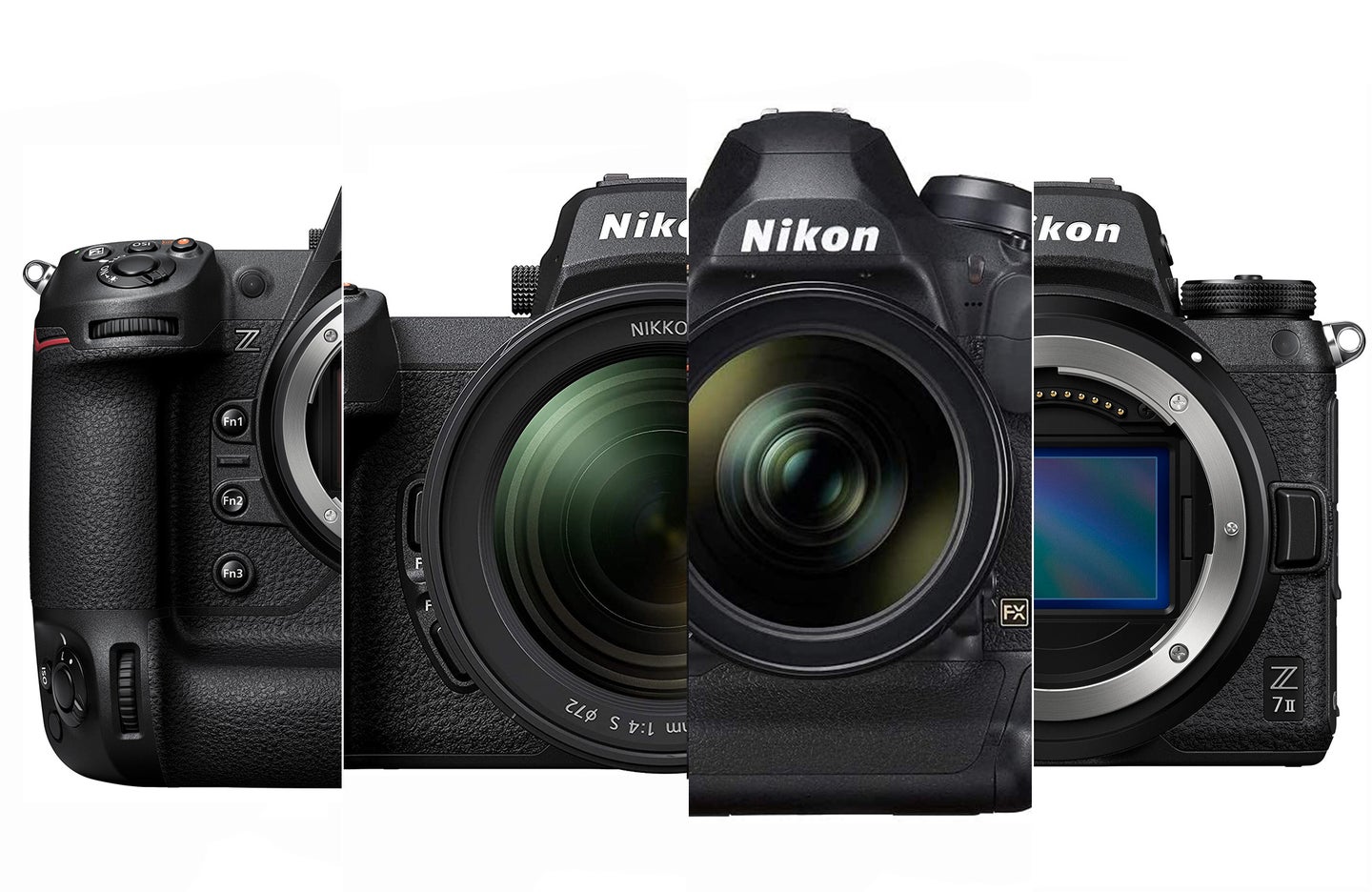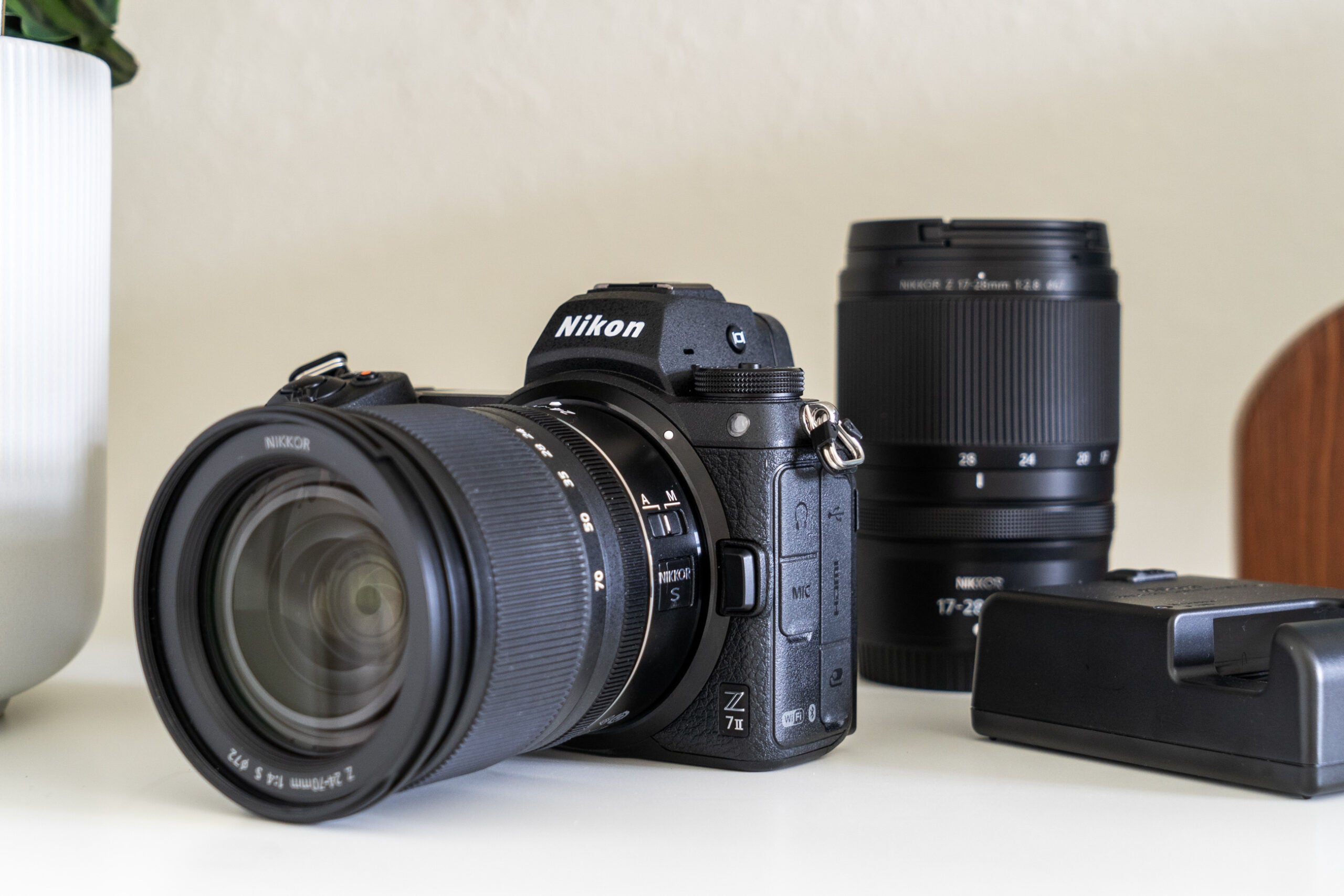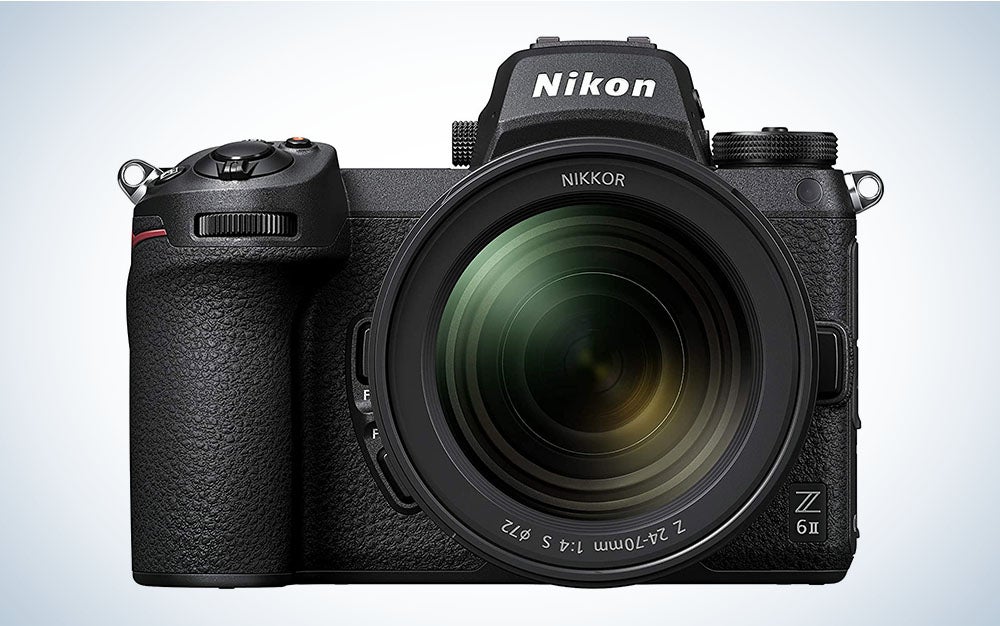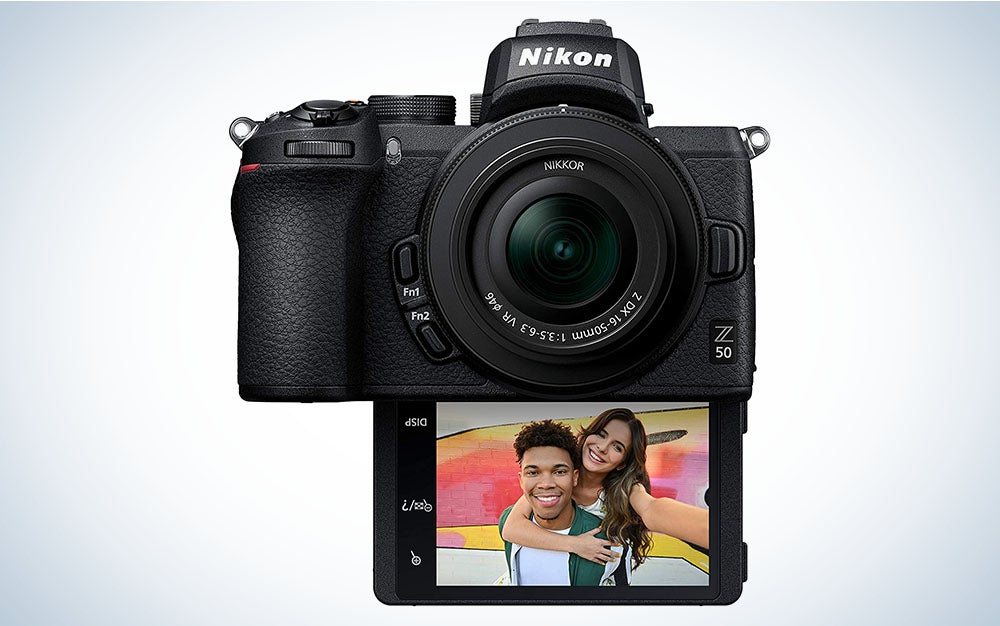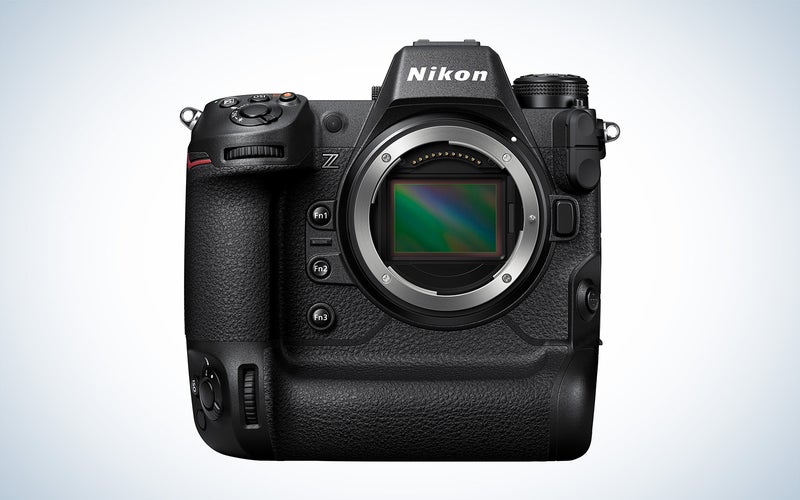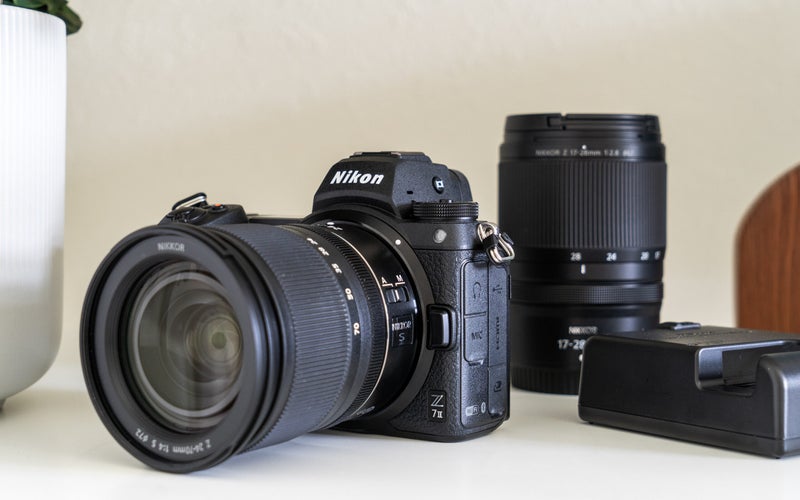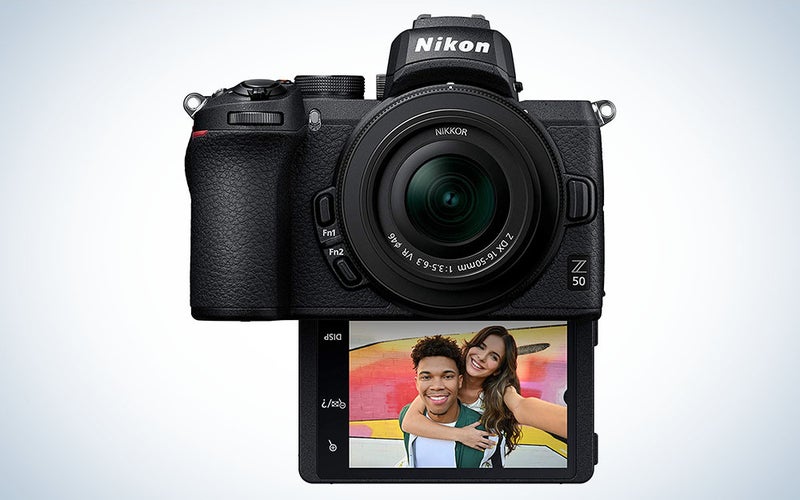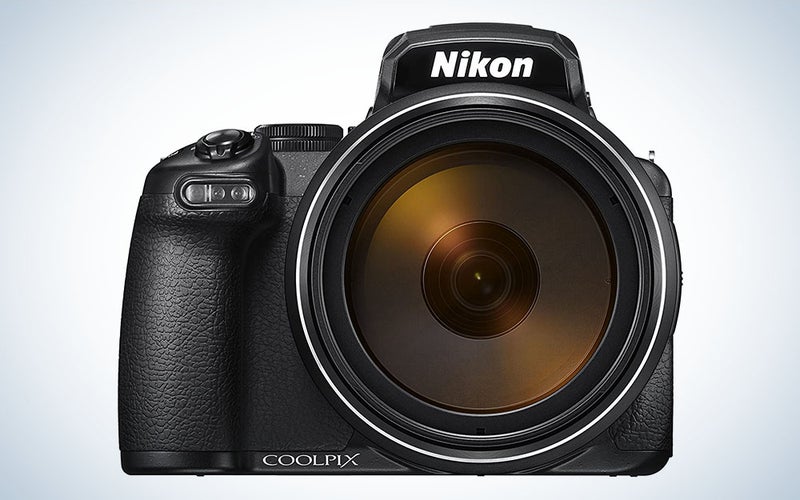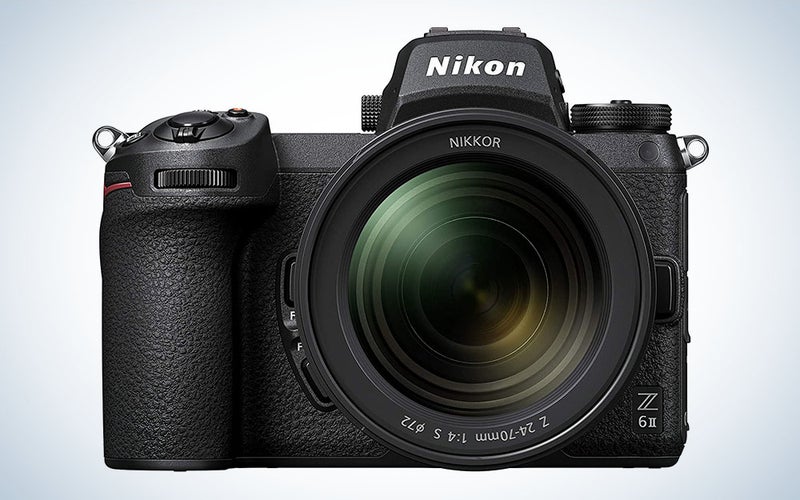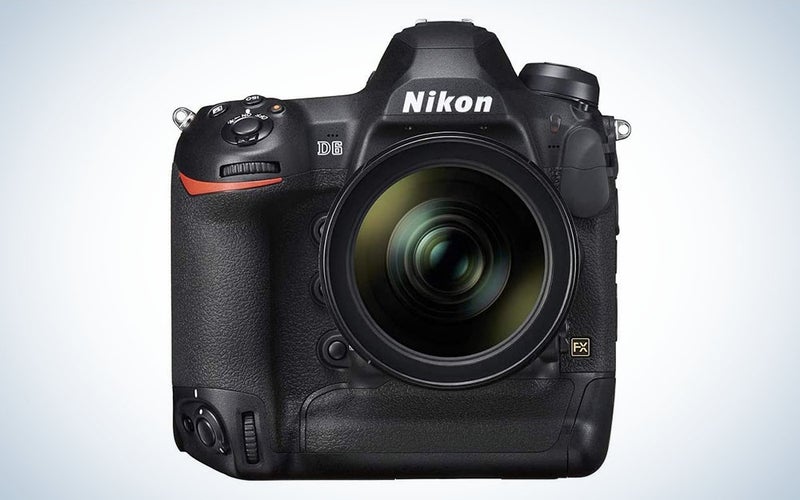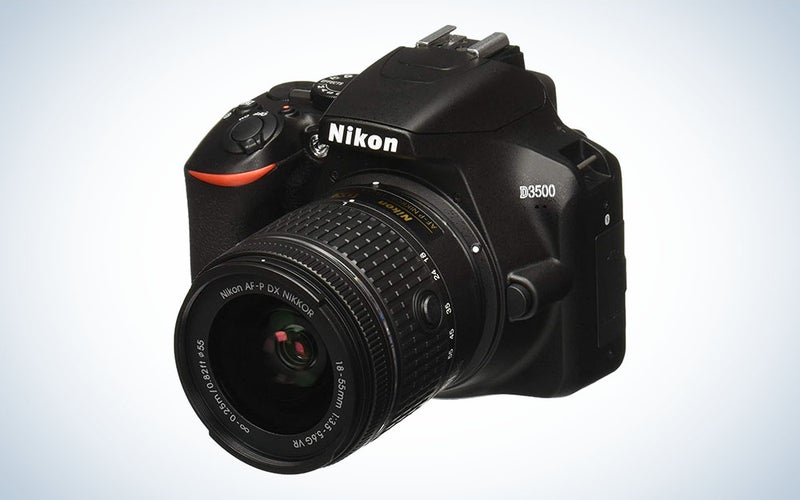We may earn revenue from the products available on this page and participate in affiliate programs. Learn more ›
Nikon cameras have been a staple in the photography community for decades. The company still churns out some of the highest-quality bodies and lenses available on the market, but as with the industry as a whole, it has adjusted its sights toward the mirrorless market. There are still many great Nikon DSLRs out there, but mirrorless cameras have more features and will get more support down the road. Still, some users prefer the DSLR experience and we totally get that. When finding the best Nikon cameras, it really is about your specific needs. so we curated this list to address a wide variety of users at various skill levels.
- Best overall: Nikon Z9
- Best high-resolution: Nikon Z7 II
- Best entry-level: Nikon Z50
- Best point-and-shoot: Nikon COOLPIX P1000
- Best low-light: Nikon Z6 II
- Best pro-level DSLR: Nikon D6
- Best budget DSLR: Nikon D3500
How we picked the best Nikon cameras
The editors and writers at PopPhoto have had hands-on with just about every major camera released in the modern era. We have been testing cameras for decades, and many of us have professional photography experience. The picks on this list come from a mixture of hands-on testing, user feedback, spec comparisons, and other editorial reviews. For this list, we focused on picking the right Nikon cameras to fit specific user needs. While DSLRs are still totally viable, mirrorless cameras clearly have an advantage when it comes to many features and future system support.
The best Nikon Cameras: Reviews and recommendations
Best overall: Nikon Z9
Nikon
Specs
- Type: Mirrorless
- Resolution: 45.7 megapixels
- Sensor size: Full-frame
- Lens mount: Nikon Z
- Image stabilization: Sensor-Shift, 5-Axis
- Memory card slots: Dual slot, CFexpress Type B / XQD
- Weight: 2.6 pounds
- Dimensions: 5.9 x 5.9 x 3.6 inches
Pros
- 20 fps raw burst shooting
- Super-fast, high-resolution sensor
- 8K video and other advanced motion modes
- Lots of customizability and tactile controls
Cons
- Big
- Expensive
10 years ago, the stats on Nikon’s Z9 mirrorless camera would have seemed impossible. Nikon built a pro-grade mirrorless camera that can literally handle pretty much any situation if you can handle the bulk and the price. It has a high-resolution 45.7-megapixel stacked sensor that reads out quickly enough that the camera can capture up to 20 fps in full-resolution raw mode. It can shoot 8K video and 4K video at a high frame rate. And it has Nikon’s most advanced autofocus system to date, which tracks subjects with extreme accuracy.
I spent two weeks shooting with the Z9 and was blown away by everything it can do. The price point obviously makes it for pros only at this point, but I’m excited to see some of these features trickle down into lower models down the road. This is one of the best cameras ever made, full-stop.
Best high resolution: Nikon Z7 II
Abby Ferguson
Specs
- Type: Mirrorless
- Resolution: 45.7 megapixels
- Sensor size: Full-frame
- Lens mount: Nikon Z
- Image stabilization: Sensor-Shift, 5-Axis
- Memory card slots: Two slots, CFexpress Type B / XQD and SD/SDHC/SDXC (UHS-II)
- Weight: 1.4 pounds
- Dimensions: 5.3 x 4 x 2.7 inches
Pros
- High-res sensor pulls in lots of details
- Solid weatherproofing for pro work
- Fast memory card support to accommodate high-res images
- Relatively compact for all that resolution
Cons
- Burst mode is just OK
If you’re only concerned with resolution and detail and don’t need the speed of the Z9, then the Z7 II will suit your needs just fine. It has a 45.7-megapixel sensor inside, which is paired with Nikon’s most advanced image processor. That helps keep the noise down, which can be a problem with high-resolution sensors.
The Z7 II has Nikon’s advanced tracking AF as well as its excellent matrix metering tech inside. It shoots 4K video or 1080p video at a high framerate. This is the pro-grade Nikon camera that would fit most people’s workflows when you take budget into consideration.
Best entry-level: Nikon Z50
Nikon
Specs
- Type: Mirrorless
- Resolution: 20.9 megapixels
- Sensor size: APS-C
- Lens mount: Nikon Z DX
- Image stabilization: Digital (video only)
- Memory card slots: Single SD/SDHC/SDXC (UHS-I)
- Weight: 13.93 ounces
- Dimensions: 4.98 x 3.68 x 2.36 inches
Pros
- Compact and light
- Screen flips forward for selfies and vlogging
- Very affordable compared to other Nikon mirrorless offerings
Cons
- Just OK viewfinder
Weighing only 14 ounces (body only), the 20-megapixel Nikon Z50 is a smaller APS-C version of its mirrorless Z-siblings but is built around a smaller sensor. In addition to a solid build and a flip-down touchscreen LCD, the Nikon Z50 offers plenty of features for the enthusiast picture-taker. But as an entry-level camera, it’s simple enough for beginners to master.
The Nikon Z 50 is speedy at 11 frames per second of continuous shooting. It is also vlogger-friendly thanks to its flip LCD and 4K video recording options. If you want to step it up a bit and prefer a full-frame camera, check out the 24-megapixel Nikon Z5.
Best point-and-shoot: Nikon P1000
Nikon
Specs
- Type: Bridge camera
- Resolution: 16 megapixels
- Sensor size: 1/2.3-inch
- Lens mount: N/A, fixed lens
- Image stabilization: Optical in the integrated lens
- Memory card slots: Single SD/SDHC/SDXC
- Weight: 3.11 pounds
- Dimensions: 5.8 x 4.7 x 7.1 inches
Pros
- Massive lens offers the equivalent of a 24-3,000mm lens
- Solid image stabilization
- Tactile controls
- Sturdy grip
Cons
- You absolutely need a tripod for long zooming
With its mind-boggling 125x zoom and a 3000mm focal length, the Nikon P1000 will bring distant subjects into close range. The camera is relatively compact, but you can photograph the moon’s craters and capture that skittish bird or wild animal while keeping your distance. And it even offers built-in image stabilization so you can get sharper photos.
Go to the other extreme and photograph small subjects as close as one foot. A 16-megapixel sensor helps keep high ISO noise to a minimum and there’s a built-in timelapse feature, too.
Best low-light: Nikon Z6 II
Nikon
Specs
- Type: Mirrorless
- Resolution: 24.5 megapixels
- Sensor size: Full-frame
- Lens mount: Nikon Z
- Image stabilization: Sensor-Shift, 5-Axis
- Memory card slots: Two slots, CFexpress Type B / XQD and SD/SDHC/SDXC (UHS-II)
- Weight: 1.4 pounds
- Dimensions: 5.3 x 4 x 2.7 inches
Pros
- Very solid feature set
- Excellent image quality
- Customizable controls
- Great low-light performance
Cons
- Fewer tactile controls than the Z7 II
The full-frame mirrorless Nikon Z 6II does a great job shooting in low light and at high ISOs. The latter ranges from a native 100-51,200 and is expandable to 204,00. The sensitivity can be set in steps of third or half EV (exposure compensation), so you can fine-tune the ISO setting. And the back-side illuminated sensor results in lower noise even when shooting at high ISOs.
The Z6 II also offers impressive autofocus abilities with 273 phase-detect autofocus points covering 90 percent of the frame. The low-light AF works well at around -4.5 EV (and -6 with low-light AF), so you won’t have to worry about starting with unfocused images. The camera also offers in-body five-axis sensor shift vibration reduction, which provides five stops of compensation, helping you to get sharp photos even in low-light situations.
Best pro-level DSLR: Nikon D6
Nikon
Specs
- Type: DSLR
- Resolution: 20.8 megapixels
- Sensor size: Full-frame
- Lens mount: Nikon F
- Image stabilization: None
- Memory card slots: Dual slot CFexpress Type B / XQD
- Weight: 2.79 pounds
- Dimensions: 6.3 x 6.42 x 3.62 inches
Pros
- Built super tough
- Up to 14 fps shooting
- Full-sized body includes a vertical grip and lots of buttons
Cons
- Big
- Expensive
The full-frame DSLR Nikon D6’s continuous capture rate clocks in at a speedy 14fps. And it has a solid autofocus system at its core, ensuring that you’ll get the shot, regardless of how fast it’s flying past your lens. The Nikon D6 is a pro-level camera built for shooting high-end sporting events or serious wildlife. It’s fast and weatherproof. But as a result, it’s bulky, heavy, and commands a price to match its capabilities, so you’ll need deep pockets. Equally speedy at 14fps, but less than half the price, is the smaller, lighter full-frame mirrorless Nikon Z6 II. While the Z9 has stolen some of the D6’s thunder, this DSLR is still a staple camera for sports shooters who want a lower resolution sensor for quicker transmission and a zero-lag viewfinder for capturing super-fast action.
Best budget DSLR: Nikon D3500
Nikon
Specs
- Type: DSLR
- Resolution: 24.2 megapixels
- Sensor size: APS-C
- Lens mount: Nikon F DX
- Image stabilization: None
- Memory card slots: Single slot, SD/SDHC/SDXC (UHS-I)
- Weight: 12.88 ounces
- Dimensions: 4.9 x 3.8 x 2.7 inches
Pros
- Very small and light
- Solid image quality
- Helpful automatic modes for beginners
Cons
- Plastic construction
- Very limited tactile controls
The Nikon D3500 APS-C DSLR has been around for a while, so you’ll likely only be able to buy a used one. But it’s still a solid option, especially for beginners and people on a budget. And it comes bundled with an 18-55mm lens, so you’re good to go for just over $600.
The D3500 has some beginner-friendly features to help those just getting started. But it also offers access to manual features as your skills improve, giving you room to grow into the camera. It’s a highly compact and lightweight camera, making it easier to bring with you on trips. And despite the budget price, it still has good image quality, so you can produce images you’ll be proud of.
Features to consider when shopping for the best Nikon cameras
The best Nikon camera for you comes down to your personal photographic needs. Whether it’s a DSLR, mirrorless camera, or another setup, you should only pay for features you’re going to use. We’ll point out some of the strengths of what we consider the best Nikon cameras currently available. From there, you’ll be better able to sort out which one will best meet your needs and fit with your shooting style and interests.
DSLR vs. Mirrorless
Just a few years ago, this wouldn’t have been a question. Nikon was late to the mirrorless party, but it arrived on a mission. Now, Nikon has shifted a large portion of its focus to mirrorless cameras, which will have way more new lens options coming down the road. That said, Nikon’s current DSLR lineup still has a ton of life left in it and you might be able to find some excellent deals on F-mount lenses as more shooters make the transition to mirrorless.
Do you need a pro camera?
Pro-level cameras combine high-end features and durability, high-speed shooting, and excellent image quality. Look for a solid, weather-sealed build with dual card slots for high-speed, high-capacity media. Large burst capacity, accurate AF, and low noise in dark scenes. And if you like to shoot action, whether it’s wildlife or sports, a camera’s frames-per-second continuous shooting numbers are a solid indicator of whether or not you’ll get the shot. Of course, autofocus and tracking also play a role in capturing a soaring eagle or game-winning touchdown.
Resolution
The resolution war is over—or at least it was. These days some of the best Nikon cameras are built around sensors that offer around double the resolution of most other models. While Nikon cameras with 45-megapixel sensors might not be for everyone, given the large file sizes and the need for computer power and storage to process and archive them, high-resolution cameras do offer some benefits. One of the main benefits for most people is the ability to crop an image more tightly than those with fewer pixels. This comes in handy when you (and your lens) can’t get close enough to a subject to zoom in closely for a good composition.
What are your actual needs?
If you’re intrigued by mirrorless cameras but don’t want to break the bank or get overwhelmed by features and bells and whistles you won’t use, check out Nikon’s entry-level mirrorless models. They have plenty of features to grow or polish your photographic skills and come in compact bodies. A camera’s size and weight are always important considerations, especially for those who are on the go, whether it’s an all-day hike in nature or a bucket-list vacation. If you have smaller hands, you want to find a camera that’s designed with important controls within reach and is light enough to hold for long periods of time. Similarly, if you have large hands, a compact model might feel cramped, so be sure to try the camera on for size before you buy it.
Fixed lens vs. interchangeable lens
Although compact and bridge cameras are relatively few and far between compared to what you used to have, there are still a handful of the best Nikon models on the market. The term point-and-shoot doesn’t necessarily mean a basic camera that’s pared down to a basic snapshot camera, however. Rather, this category is applied to cameras that don’t have interchangeable lenses. So, don’t be fooled—there are P&S models that have special capabilities that you won’t find elsewhere, like super-long zoom.
Low-light shooting
Versatility is key for most photographers, and that versatility extends from video capabilities to low-light performance. Since artificial light is not always available (or desirable), the ability to shoot at high ISOs while maintaining detail and sharpness is key. Results at high ISO are usually best when shooting and processing RAW files but the camera should be able to deliver low noise in JPEG files as well. Although some people enable built-in high ISO noise reduction, we found it’s usually best to disable this feature (or set it at the lowest level) and handle any noise reduction when post-processing RAW files. Another key factor is the camera’s ability to focus under low light and low contrast conditions.
Budget
Like any other product category, camera prices increase in concert with a camera’s feature set and performance. But there are bargains to be had, especially if you don’t need the latest technology or the most bells and whistles. Since digital camera improvements are often evolutionary or fairly minor from one iteration to the next, it may not be worth the money for the latest and greatest. And, as other new models come on the market, older models drop in price but don’t lose their original capabilities. So look around for camera models that have been around for a while and grab yourself a bargain.
FAQs
Q: What is the newest Nikon DSLR?
Nikon’s newest DSLR camera is the 20.8-megapixel, full-frame D6. With a price tag of $6,500, it firmly fits in the professional-level camera realm. It offers a speedy 14 fps continuous shooting rate and a native ISO range of 100 to 102400. It’s also a rugged camera with extensive weather sealing and a reinforced shutter mechanism. The D6 is meant to be used and put to the test by serious pros.
Q: What’s the most expensive Nikon camera?
Nikon’s most expensive camera is the D6. As mentioned above, this pro-level camera is equipped with a long list of sophisticated features and is designed for the photographer who needs exceptional image quality and stellar performance. The Z9 is Nikon’s most expensive mirrorless camera but still falls about a grand short of the D6 at the time of writing.
Q: What is the least expensive Nikon camera?
Nikon’s least expensive camera is the Nikon Coolpix B600, which is a point-and-shoot camera. They are getting hard to find new, however. In terms of cameras that are widely available, the Z30 is Nikon’s most affordable mirrorless camera.
A final word on shopping for the best Nikon cameras
- Best overall: Nikon Z9
- Best high-resolution: Nikon Z7 II
- Best entry-level: Nikon Z50
- Best point-and-shoot: Nikon COOLPIX P1000
- Best low-light: Nikon Z6 II
- Best pro-level DSLR: Nikon D6
- Best budget DSLR: Nikon D3500
Like any camera purchase, it’s important to match a camera’s feature set and body design with your needs and photographic style. Because a camera is a serious investment, be sure to think about where you want to take your photographic skills and make sure that the camera you select will serve your needs for at least the near future.
Why trust us
PopPhoto has a long history of delivering the opinions of some of the sharpest and most prolific camera dorks the world has to offer. Since 1937, we’ve been reviewing cameras, providing wisdom from well-known photographers, and generally just nerding out about all that goes into making great pictures. Our current crop of writers and editors have decades of professional photography and camera writing experience among them. Collectively, we’ve probably shot with just about every camera and lens combo you can imagine—as well as some obscure stuff you may not even know about. Remember the Casio Tryx folding camera? PopPhoto does.
We also get that buying a camera is a big decision, which is why we’re dedicated to helping folks choose the right one (or, in our case “ones”) for their needs. Case in point: Handing over top dollar for an expensive rig may leave you unsatisfied if it doesn’t fit your preferred shooting style. Sure, a $6,000 sports-oriented DSLR can capture landscapes, but do you really need to do it at 30 frames-per-second? No, you don’t.
